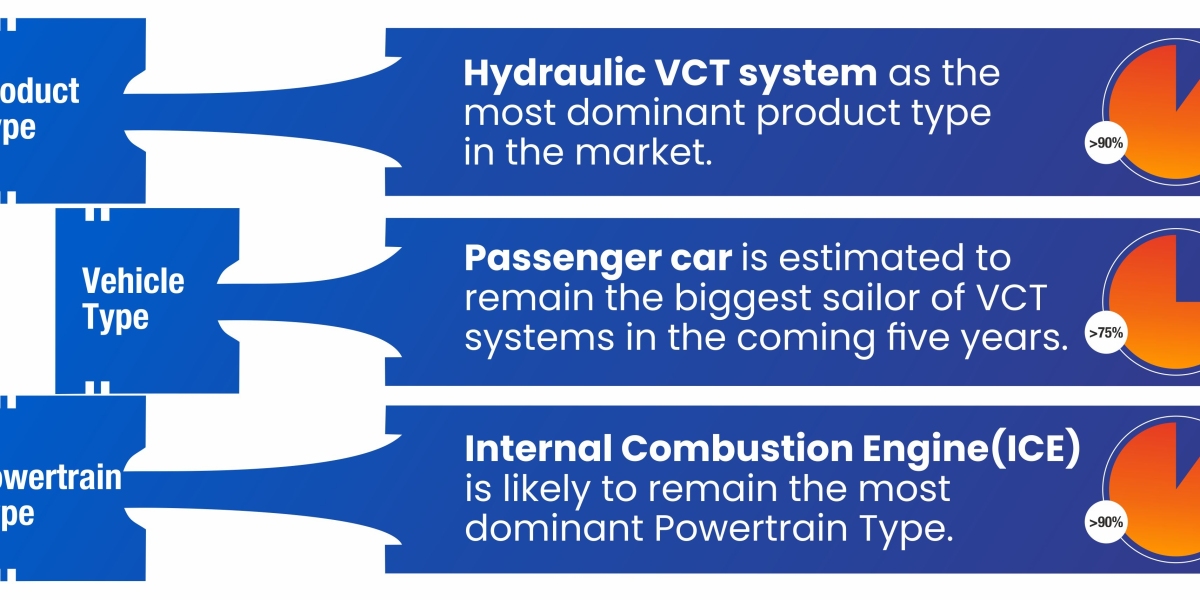According to Stratview Research, the automotive variable cam timing system market is expected to reach an estimated value of US$ 3.1 billion in 2025, a landmark figure that the market never touched before.
In the ever-evolving world of automotive engineering, the pursuit of greater efficiency, performance, and reduced emissions remains a top priority. One of the pivotal innovations that have played a significant role in achieving these goals is the Variable Cam Timing (VCT) system. This technology has transformed the way modern engines operate, providing a fine-tuned approach to control engine performance and efficiency.
The Core Concept of Variable Cam Timing
Variable Cam Timing, often abbreviated as VCT, is a sophisticated technology that allows engines to adjust the timing of their camshafts dynamically. Camshafts control the opening and closing of engine valves, which, in turn, regulates the flow of air and fuel into the combustion chamber. This precise control over valve timing enhances engine efficiency, power output, and emissions control.
The VCT system typically includes a phaser, which is a device that can rotate the camshaft in relation to the crankshaft. By altering the camshaft's position, the VCT system can change the valve timing and overlap, adapting the engine's performance to various driving conditions.
Enhancing Efficiency
Fuel Efficiency: Variable Cam Timing systems are designed to maximize fuel efficiency. During low-load, low-speed conditions (such as idling or cruising), the system can delay the valve opening and closing, reducing air intake and fuel consumption. This leads to improved gas mileage and a reduced carbon footprint.
Power and Torque: When the driver demands more power, the VCT system can advance the valve timing, optimizing air-fuel mixture and enhancing torque and horsepower output. This flexibility allows engines to perform efficiently across a wide range of driving conditions.
Reduced Emissions: By fine-tuning valve timing, the VCT system helps engines achieve complete combustion, reducing emissions of harmful pollutants. This is particularly important in meeting stringent emissions standards.
The Impact on Performance
Variable Cam Timing doesn't just contribute to efficiency and emissions control; it also plays a crucial role in improving overall engine performance. Here's how:
Responsiveness: Engines equipped with VCT systems are more responsive. The ability to adjust valve timing on the fly ensures that the engine can quickly adapt to the driver's demands, providing seamless acceleration and smooth power delivery.
Eliminating Turbo Lag: In turbocharged engines, VCT can help eliminate turbo lag by adjusting valve timing to maintain optimal airflow, even at low RPMs. This means quicker access to power when you need it.
Combining with Turbocharging: The combination of variable cam timing and turbocharging has become increasingly common in modern engines, resulting in impressive power and efficiency gains. The VCT system helps optimize the air-fuel mixture for boosted performance.
Future Prospects
As the automotive industry continues to evolve, the role of Variable Cam Timing systems will become even more pronounced. With advancements in technology and engineering, we can expect to see more sophisticated and integrated VCT systems. These innovations will further enhance engine efficiency and performance while continuing to reduce emissions.
Conclusion
Variable Cam Timing systems have unlocked a new era of efficiency and performance in modern engines. From fuel savings to power gains and reduced emissions, VCT is a cornerstone of automotive engineering. As we look to a future of electric and hybrid vehicles, VCT will remain an integral part of the journey towards greener and more efficient transportation. The ever-evolving world of automotive technology promises exciting developments in the field of Variable Cam Timing, and it will undoubtedly continue to shape the engines of tomorrow.









